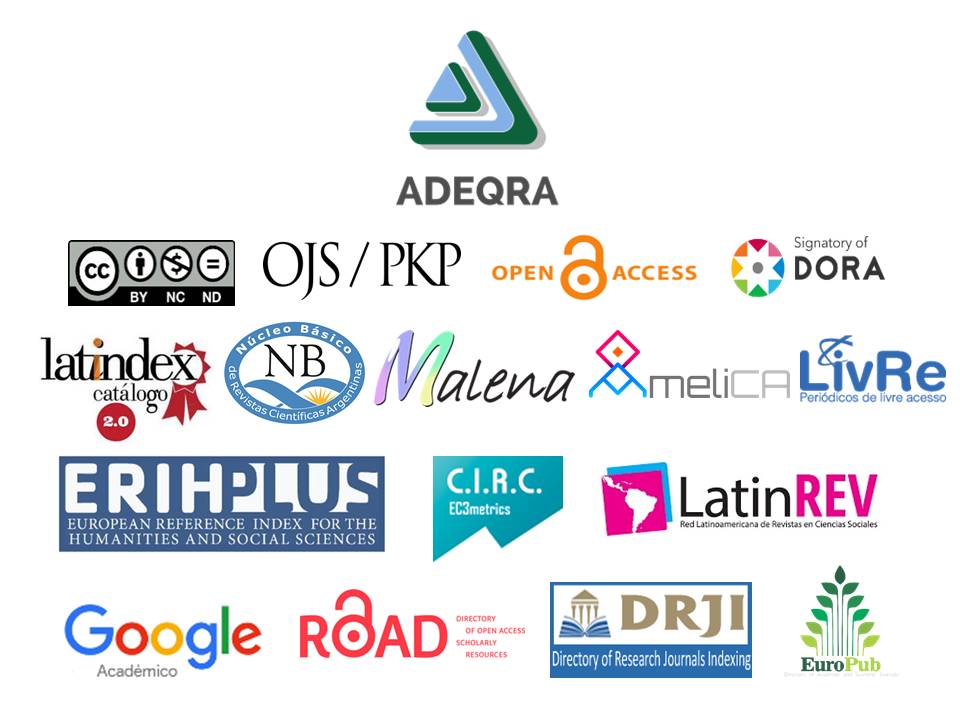The periodicity trees and the elements of block d of the standard periodic table
Keywords:
triads of atomic number, periodicity trees, block dAbstract
The periodic system based on triads of atomic number, proposes a representation where the main criterion is the increasing order of atomic numbers, and the secondary criterion is established through the formation of triads of atomic numbers, without appealing to electronic configurations or any quantum consideration. Although the proposed table is based on triads of atomic numbers, the fundamental relationship in the architecture of the table is given by the “periodicity trees”: symmetric systems of interrelated elements by means of the triads, which contain 20 elements each and they take the place of traditional groups. In this work, we will develop the “periodicity trees” proposal and apply it to current discussions in the periodic table, particularly to the elements that make up block d of the standard periodic table.
References
Bensaude-Vincent, B. (1989). Mendeleiev: historia de un descubrimiento. En M. Serres (ed.). Historia de las Ciencias, Madrid: Ediciones Cátedra.
Bent, H. (2006). New Ideas in Chemistry from Fresh Energy for the Periodic Law, Bloomington: Author House.
Borges, J. L. (2005). Obras completas, Buenos Aires: Emecé.
Cotton, F. y Wilkinson, G. (1988). Advanced Inorganic Chemistry. Nueva York: Wiley-Interscience.
Earley, J. (2009). How chemistry shifts horizons: element, substance, and the essential. Foundations of Chemistry, 11, 65-77.
Hendry, R. (2006). Substantial confusion. Studies in History and Philosophy of Science, 37 (2), 322-336.
Jensen W. (2003). The place of Zinc, Cadmium, and Mercury in the Periodic Table. Journal of Chemical Education, 80 (8), 952-961.
Lavelle, L. (2008). Lanthanum (La) and actinium (Ac) should remain in
the d-block. Journal of Chemical Education, 85 (11), 1482-1483.
Paneth, F. A. (1931). The epistemological status of the concept of element, [reimpreso en Foundations of Chemistry, 5, 113-145 (2003)].
Ruthenberg, K. (2009). Paneth, Kant and the philosophy of chemistry. Foundations of Chemistry, 11 (2), 79-91.
Scerri, E. (2005). Some aspects of the metaphysics of chemistry and the nature of the elements. HYLE – International Journal for Philosophy of Chemistry, 11 (2), 127-145.
Scerri, E. (2007). The Periodic Table – Its Story and Its Signifcance, Nueva York: Oxford University Press.
Scerri, E. (2008). The role of triads in the evolution of the periodic table: past and present. Journal of Chemical Education, 85 (4), 585-589.
Scerri, E. (2009). Which elements belong in group 3? Journal of Chemical Education, 86 (10), 1188.
Scerri, E. (2010). Explaining the periodic table, and the role of chemical triads. Foundations of Chemistry, 12 (1), 69-83.
Scerri, E. (2012). What is an element? What is the periodic table? And what does quantum mechanics contribute to the question? Foundations of Chemistry, 14 (1). 69-81.
Schwarz, E. (2007). Recommended questions on the roads towards a scientifc explanation of the periodic system of the chemical elements with the help of the concepts of quantum physics. Foundations of Chemistry, 9 (2), 139-188.
Soddy, F. (1913). Intra-atomic charge. Nature, 92, 399-400. Velenzuela Calahorro, C. (1999). Introducción a la Química Inorgánica. Madrid: Mc Graw-Hill Interamericana.
Van Spronsen, J. W. (1969). The Periodic System of Chemical Elements - A History of the First Hundred Years. Amsterdam: Elsevier Publishing Company.
Weisberg, M., Needham, P. y Hendry, R. (2011). Philosophy of chemistry. En E. N. Zalta (ed.) The Stanford Encyclopedia of Philosophy,
Stanford: Stanford University, Recuperado de: http://plato.stanford.edu/archives/win2011/entries/chemistry
Wiberg, N. (2001). Inorganic Chemistry. Berlín: Academic Press.
Zambon, A. (2018). A Representation of the Periodic System based onatomic-number triads. Foundations of Chemistry, 20 (1), 51-74.
Downloads
Published
How to Cite
Issue
Section
License
Copyright (c) 2019 Alfio Zambón

This work is licensed under a Creative Commons Attribution-NonCommercial-NoDerivatives 4.0 International License.



